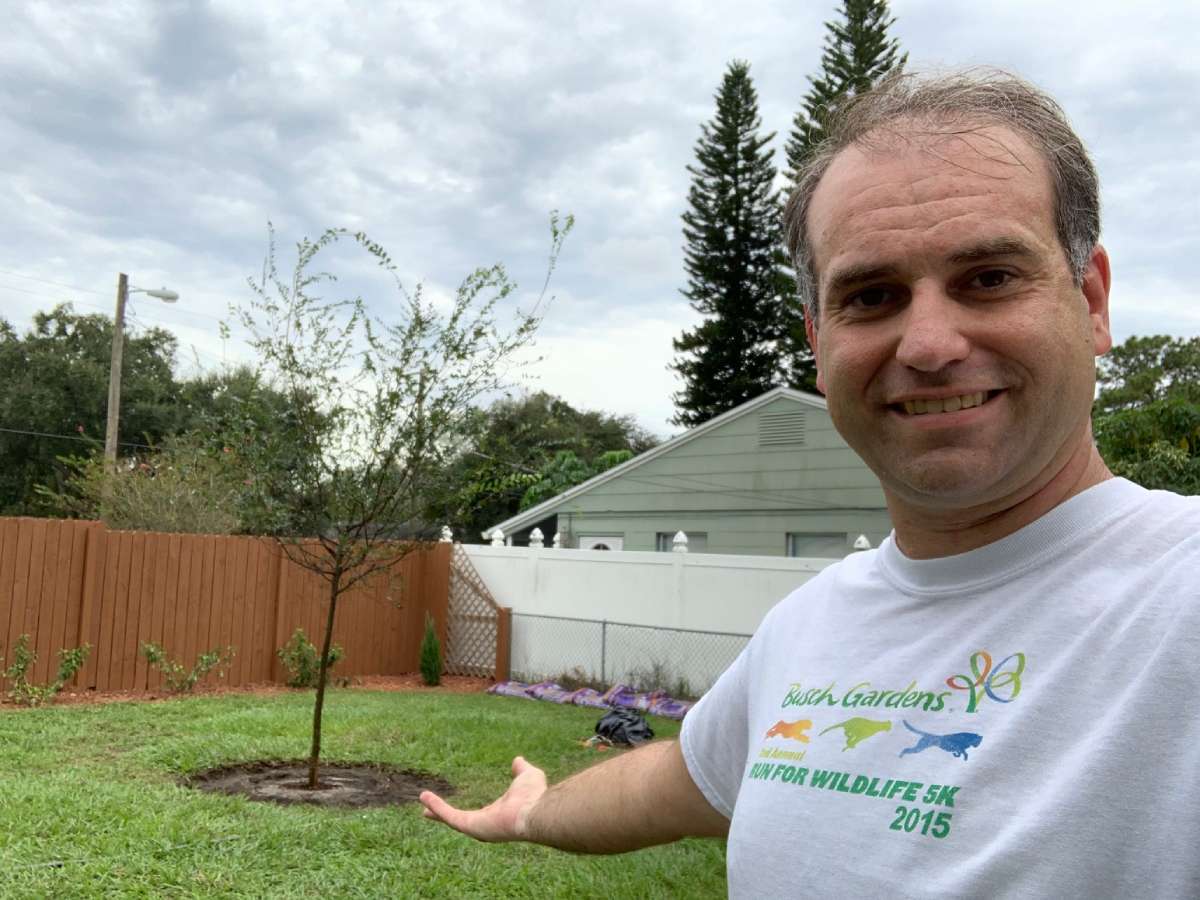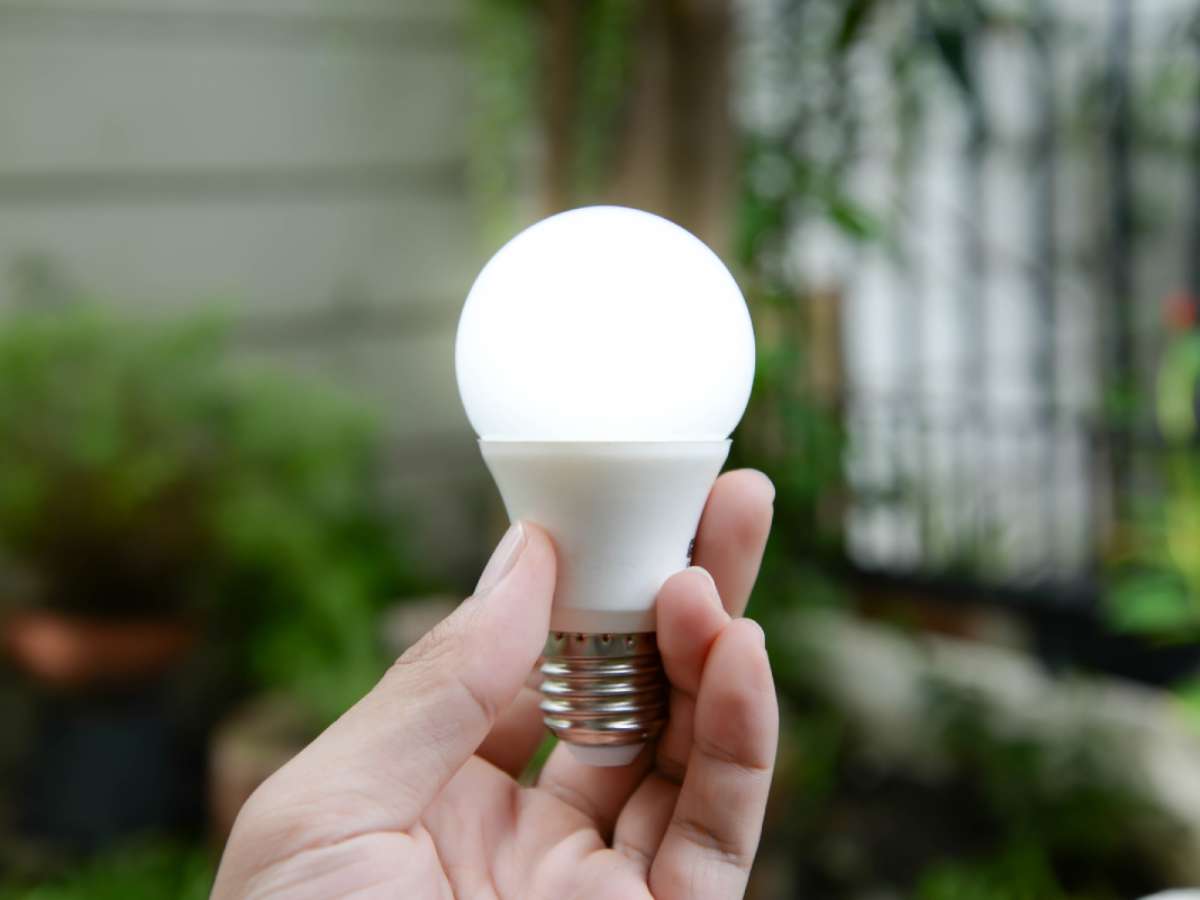This is part two of a 2-part series.
Part one is here.
Following are 26 more things you can do to make a difference…

#26 Plant a bamboo fence … “Bamboo makes a beautiful fence, and because it grows so quickly (as much as 1 foot a day or more, depending on the species), it absorbs more CO2 than, say, a rosebush.”
Related: 4 Ways To Make Your Home Environmentally (and Panda) Friendly”
#27 Straighten up and fly right … “The only way to get from Los Angeles to London is by carbon-spewing jet airliner. One simple change can help: adjust the exit and entry points each nation sets for its airspace so that planes can fly in as straight a line as possible. Of course, the best way to reduce plane emissions is to fly less.”
#28 Have a green wedding … “Anything you do to make your wedding a little more modest — from wearing a borrowed wedding dress to choosing recycled paper or a website for your invitations — will lower its contribution to carbon emissions. Consider it your wedding gift to the planet.”
#29 Remove the tie … “In one summer, Japan cut an estimated 79,000 tons of CO2. If U.S. businesses eased off on their arctic-level air-conditioning, the gains could be significant. Time to make every summer day casual Friday?”
#30 Shut off your computer … “According to the U.S. Department of Energy, 75% of all the electricity consumed in the home is standby power used to keep electronics running when those TVs, DVRs, computers, monitors and stereos are OFF.”
Related: “It’s Not Just Your Imagination… Your House IS Haunted”
#31 Wear green eye shadow … “Cargo Cosmetics launched PlantLove, a botanical lipstick packaged in a 100% biodegradable tube made of polylactic acid — a corn-based renewable resource. When the tube is empty, plant it in the ground, and it sprouts flowers.”
#32 Kill the lights at quitting time … “Assigning an office switch-off monitor might sound a little like third grade, but it could cut carbon emissions by reducing electricity use, not to mention extending equipment life and lowering maintenance costs.”
#33 Rearrange the heavens and the Earth … “What if we could build a giant mirror in space to deflect the sun’s energy? Or inject sulfur into the stratosphere to cool the earth? Scientists are examining such sci-fi methods as a gigantic Plan B should efforts to end carbon emissions fail.”
#34 Rake in the fall colors … “Improvements have been made to make leaf blowers more efficient, but using that motorized hurricane for just an hour still sucks down 1 pt. of gas and oil. With more than 30 million acres of lawn in the U.S., it’s a high price to pay for a job that can be done almost as well, if somewhat more slowly, with a rake.”
#35 End the paper chase … “Paper does grow on trees: 900 million of them every year become pulp and paper. We can reduce that number by buying more recycled paper. It uses 60% less energy than virgin paper.”
#36 Play the market … “In carbon-emissions trading, the government puts a cap on how much carbon an industry is allowed to emit from power plants, factories and cars. Innovative companies could meet those caps through actual reductions and earn carbon ‘credits,’ which they could sell to industry laggards.”
#37 Think outside the packaging … “You can reduce the amount of packaging with a little consumer vigilance. Give back the extra napkins or unwanted sugar packets; carry that gallon of milk by its handle. True eco-nerds will even bring their own cup to a Starbucks.”
#38 Trade carbon for capital … “One of the most ambitious of the Kyoto Protocol’s plans to help cut greenhouse gases was the Clean Development Mechanism, through which companies in the rich world could earn credit not for reducing their own emissions but for investing in energy efficient projects in the developing world.”
#39 Make your garden grow … “Try alternatives, from old-fashioned compost to grass clippings, which contain about 4% nitrogen. More adventurous gardeners use a homemade fertilizer mix that includes seaweed extracts for potassium and fish proteins and oils for nitrogen.”
#40 Get a carbon budget … “Essentially, personal carbon allowances are a cap-and-trade scheme for individuals. They set a clear target and let the market work out the details. Bike to work and live beneath your allowance, and you can sell your carbon credits to energy spendthrifts who refuse to give up their SUVs.”
#41 Fill ‘er up with passengers … “The next time you get behind the wheel of your car, turn to the passenger seat. Chances are, it’s empty. In most of the U.S., the single-occupant driver still reigns supreme. Nearly 80% of people drive to work alone; about 38% drive alone in general.”
Related: “Can We All Just Admit We’re Not Going To Carpool?”
#42 Pay for your carbon sins … “Unlike mandatory allowances, carbon offsets allow consumers to pay voluntarily to reduce carbon emissions by a quantity equal to their estimated contribution. The money typically funds clean-energy projects, pollution control, tree planting and forest conservation.”
#43 Move to London’s new green zone … “Builders plan in 2010 to open the city’s first large-scale zero-carbon housing development. All 233 homes on the 3-acre spot will hook up to a combined heat-and-power plant that turns wood chips into electricity and hot water, with extra juice from solar panels and wind.”
#44 Check your tires … “Just giving your engine a tune-up can improve gas mileage 4% and often much more. Replacing a clogged air filter can boost efficiency 10%. And keeping tires properly inflated can improve gas mileage more than 3%. The bottom line? If you can boost your gas mileage from 20 to 24 mpg, your old heap will put 200 fewer pounds of CO2 into the atmosphere each year.”
#45 Make one right turn after another … “In 2004, UPS announced that its drivers would avoid making left turns. The time spent idling while waiting to turn against oncoming traffic burns fuel and costs millions each year. Today 83% of UPS facilities are heading in the right direction; within two years, the policy will be adopted nationwide.”
#46 Plant a tree in the tropics … “Trees in temperate latitudes — including most of the U.S. — actually have a net warming effect on the climate. The heat that dark leaves absorb outweighs the carbon they soak up.”
#47 If you must burn coal, do it right … “In co-generation power plants, excess heat is captured and reused for domestic and industrial heating, nearly doubling a plant’s efficiency. The process is similar to what goes on in your car — think of the engine as a mini cogeneration plant. When the engine runs, it create excess heat while driving the car, and in cold weather, that waste product is used to warm the car.”
#48 Drive green on the scenic route … “Going on vacation doesn’t have to mean leaving your green conscience at home. The car-sharing service Zipcar rents hybrids cars in five U.S. cities, Toronto and London.”
#49 Set a higher standard … “If cars have to meet energy standards, why don’t power plants? Carbon-emission standards limiting the amount of CO2 that a new power plant can spew are in place in a handful of states.”
#50 Be aggressive about passive … “Georg Zielke, his wife and kids share a 5-bedroom “passive house” in Darmstadt, Germany, with heating costs 90% lower than their neighbors’. Extra insulation and state-of-the-art ventilation recycle the energy from passive sources such as body heat, the sun and household appliances to warm the air.”
#51 Consume less, share more, live simply … “There is an older path to reducing our impact on the planet that will feel familiar to Evangelical Christians and Buddhists alike. Live simply. Meditate. Consume less. Think more. Get to know your neighbors. Borrow when you need to and lend when asked.”
NOTE: The above things you can do to make a difference were summarized from an article in Time magazine’s “Global Warming Survival Guide” (March 31, 2007) entitled 51 Ways To Save The Environment. There are a lot more great tips in that article. I encourage you to check it out!
So, Are You Helping Or Hurting?
If you are already doing some of these things… we sincerely applaud your efforts. THANK YOU for making a difference!
While my husband and I appear to be doing a few things right, it’s a far cry from what we could and should be doing, that’s for sure. Those 51 articles from Time magazine have definitely been eye-opening for us.
So, how many of those 51 things are you doing? Which ones are you going to start doing now?…




